Sengthong Sithounnolat, Jeris Woodson, Donald Greene, Ashley Blanco
On a recent Saturday, 10 people gather around a table at the offices of Trauma Transformed in Oakland, Calif., where quotes from figures like Frederick Douglas, Nelson Mandela, and Coretta Scott King grace one wall as light streams in from a skylight above.
The group is known as the Resident Warriors, which meets weekly. One participant talks of her recovery from addiction and her mother’s murder. Another mentions being molested as a child. Chloe Underdue describes what she thought her role was in creating distance with her best friend, and how she and the friend worked through it.

“Unfortunately, my friend was murdered in her home along with her mother,” says Underdue, who worked as an education liaison between the San Francisco Unified School District and families living in public housing at Sunnydale. “We still had great experiences, but that time I spent with the distance is the time I could never get back.”
If you look at reports on the city’s public housing projects, it doesn’t take long to see how trauma and adversity have left their mark. Residents experience higher levels of violence than the rest of the city. They’ve been trapped in food deserts with little access to fresh produce and other healthy food. And they have had limited access to health care and transportation.
Significantly, “60% of the families in crisis in San Francisco lived within walking distance of only seven street corners in the city. Five of these seven corners coincided with the eight distressed public housing sites identified by the SFHA [San Francisco Housing Authority],” according to the website of HOPE SF, an organization tasked with revitalizing public housing communities. This, in a city boasting the highest number of billionaires per capita of any city in the world. It’s a city where rent for a one-bedroom apartment averages $3,690 a month, adding to a mass exodus of long-time residents unable to afford to live in San Francisco. This includes Underdue, who recently moved from San Francisco, where she had lived amidst her extended family members who have been there for decades.
The Resident Warriors formed 18 months ago as part of a long-term $2 billion city initiative known as HOPE SF. It’s a collaboration among the San Francisco Mayor’s Office on Housing and other government agencies; affordable housing development organizations; the San Francisco Foundation, and a number of private foundations. The latter have invested about $18 million towards health, education and employment, according to San Francisco Foundation’s Ellie Rossiter, the initiative officer and partnership director of HOPE SF.
HOPE SF’s overall goal is to rebuild public housing at the city’s Potrero Terrace and Annex, Alice Griffith, Sunnydale and Bay View complexes with input from residents, and without tenants losing access to housing, according to the website of the San Francisco Foundation. Among other things, the initiative vows to transform 2,500 “severely deteriorated public housing units into sustainable mixed-income communities with neighborhood retail, community centers, parks and playgrounds,” by 2034. So far, 535 replacement units are either under construction or completed at the four sites, according to data provided by Rossiter.
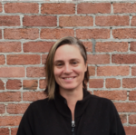
Unlike many housing initiatives, trauma awareness and trauma-informed practice was built into HOPE SF. Trauma Transformed was asked by the SF Foundation to offer its training in trauma-informed systems to the residents, says Jen Leland, executive director of the organization, which provides training across the Bay Area. “We came in to also offer healing spaces for resident leaders who were leading communities while being impacted by so much trauma, including systemic trauma,” she says.
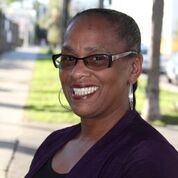
That day-to-day impact of trauma and the persistent work to undo its grip was apparent during a visit to Resident Warrior Uzuri Pease-Greene, who is a safety liaison for Potrero Hill Terrace and the executive director of CARE, a program for local youth. When I caught up with her, Pease-Greene was sending out a mass email to public housing residents, inviting them to participate in a moment of silence marking the recent deaths of those who had been killed by gun violence.
Donald Greene, another Resident Warrior (and Pease-Greene’s husband) is a cofounder of CARE, which takes children and their families away from their corner of the city to fishing expeditions and trips to Great America. He was interested in being involved in learning about trauma “because it’s something we see on a daily basis, and which we have been a part of ourselves. I was shot in 2005 for mistaken identity,” he said. “I was shot two times.”

Greene says the weekly meetings have helped him be more effective in his community work by helping him learn to listen and also to speak up. “It got me to speak more. I’m more of a hands-on person. Now I’m able to express my feelings around people. If it wasn't for this program, I wouldn’t have been doing this interview. I would just nod my head: ‘Yes, alright.’”
Jeris Woodson, a regular volunteer at community events at Potrero, is a Resident Warrior who attended the first trauma training given by Trauma Transformed in 2018. To Woodson, learning about the CDC/Kaiser Permanente Adverse Childhood Experiences Study — which tied 10 types of childhood trauma to the adult onset of chronic disease, mental illness, violence, and being a victim of violence — was eye-opening, as was learning about how to prevent and mitigate ACEs.

“I really had a good childhood until I was a teenager. That’s when my trauma kicked in, which raised my score,” says Woodson, who worked as a case manager at Westside Community Center after recovering from drug addiction. She just began a new position as a case manager at San Francisco’s Misdemeanor Behavioral Court. “I’m a mother of five and I’ve had my share of causing trauma to my own kids by not being physically available, sometimes because of my drug addiction. It helped me want to be better so that my kids could have better [ACE] scores.”
Pease-Greene agrees that the ACE Study was pivotal. “My [ACE] score is off the Richter,” she says. “We went to the ACEs conference [National ACEs Conference in October 2018]. It’s just knowing that that’s why we work so hard at what we do, so we can at least minimize the ACE scores for the kids that are coming up. So that in itself helped solidify why we are doing this work and why we keep doing this work after working all day long.”

But another part of the process that has been critical from the beginning for Pease-Greene and others is to ensure that they have a voice in how things unfold. In a previous experience with a nonprofit, she witnessed how that didn’t work.
“I started seeing how decisions were being made without us at the table,” she says. “I got my hand spanked quite a few times for speaking up. Everyone, whether you’re homeless or not homeless, everyone deserves to be dealt with respect. Everyone deserves housing. Everyone wants the same thing for their kids, a good education.”
Pease-Greene and her peers brought that mindset to their training with Trauma Transformed, which sought their input as community members, according to Anh Ta, assistant director at Trauma Transformed.
“It was good to know that there were people in places who wanted to help us, and they brought us together and got us the resources and got us to where we are,” says Underdue. “And it felt even better when those people allowed us to take the lead and decide the fate of our group.”
And when they first were provided with the curriculum, they knew right away that some changes had to be made.
One word that didn’t sit right was “being healed,” says Pease-Greene. “We were like 'healed’? You’re never healed, right?” Instead, she says, “You’re walking through your pain. Take myself, I’ve been raped. Even though I’ve been raped, I can talk to other women about being raped. Even though I get triggered, I don’t get triggered to where I’m stuck. I’m able to talk about it freely, like I’m talking about it to you, and it hasn’t made me be stuck in my life. It’s helping people be unstuck, because that’s what sticks us — our trauma and our pain. And it’s the shame and everything that comes along with it.”
“A lot of the language is very clinical,” agrees Woodson. “If you don’t understand the language, it could be very boring. It doesn’t feel like it relates to you. Even the science about how trauma affects our bodies, different chemicals that the brain releases, we wanted to put it in a way that any person can really understand that effect.”
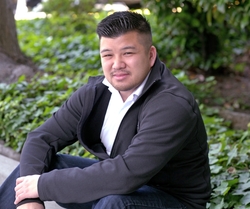
“They said: ‘You call that trauma. We call it pain,’” recalls Ta, as one example of a language shift. Another, he says, was translating the academic language of “Plan, Do, Study, Act” into “Do, Know, Be.”
To make it work, Trauma Transformed kept the structure but allowed the Resident Warriors to take the lead on building the curriculum and juggling that work with all of the other time commitments they had in their lives and in their communities. Those time constraints meant pushing back deadlines repeatedly, says Ta.
And for it to be truly led by the community, it also meant some bending of the rules among those who provided grants to make the training possible. Genentech, which funds trainings through its The Resilience Effect program, had to reconsider its expectations.
“A lot of our early thinking was focused on how might we adapt and evolve approaches to training around trauma and trauma-informed care, and build it in a way that resonated for communities,” says Rajni Dronamraju, associate director of charitable giving at Genentech. (Genentech also provides funding to ACEs Connection.)
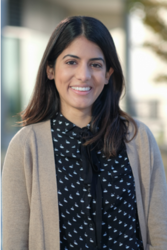
“In the process of engaging in those questions with resident leaders, what I learned — and what I learned from the team — was that a lot of the work around leadership development and curriculum had to be done in parallel with deeper healing with the resident leaders themselves," she says. "So, really attending to the needs, experience and historical trauma of the community and the experience that a lot of the leaders were carrying themselves was a critical part of the leadership development and training design process.”
Back at the gathering, the Resident Warriors finish a small-group exercise. They examine conflicts, how they themselves contributed to those conflicts, and how they eventually pushed through. Underdue, who had recounted her regrets at the distance between her and a friend she later lost, steered the conversation to forgiveness.
“For myself to have closure, I had to forgive myself,” she says, and she had to forgive her friend for not communicating with her.

Reflecting on the overall purpose of the group, Pease-Greene says that it’s shifted for her. “It started off as: ‘Do you want to heal your community?’ and it’s doing that.
"But actually for me personally, it’s [knowing] you’re never going to be ‘healed’," she continues. "It’s getting to a place where you can just walk through your pain and handle things in a different way. If we are able to show that to other people, then so be it. And saying: ‘I understand your pain, and in some ways have experienced that same pain.’ And then people know they’re not by themselves.”







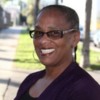

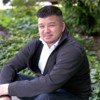

Comments (0)